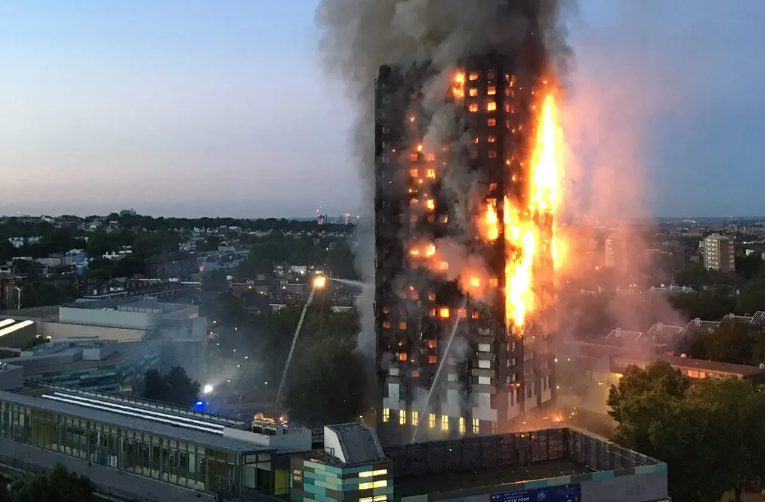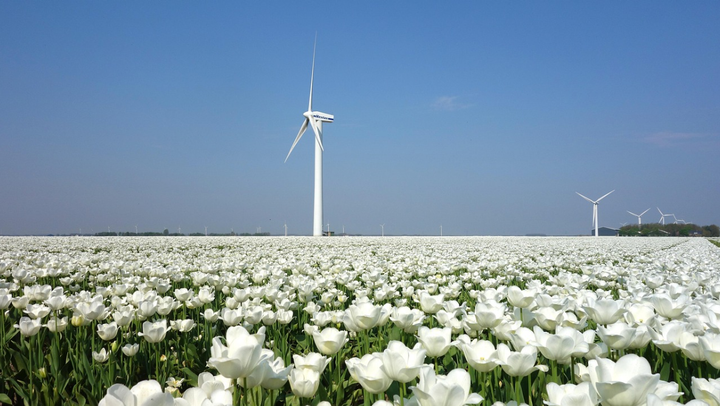The Grenfell Tower Disaster: How Ignorance of Material Safety Cost Lives

Scarlett Bateman
Tragically, the Grenfell Tower Disaster remains a significant indicator of many of the issues with the British government;s and local councils’ ignorance of safety in materials. 72 lives were lost from the 14-16th of June 2017 and arguably, they were preventable.
Political Neglect and Fire Safety
Politics that affected Grenfell started way before the disaster - namely, David Cameron. Many of the policies blamed for the deaths at Grenfell were not reviewed or altered during his term as PM. Instead, he chose to stick to his 1 in 2 out policy which discouraged passing or viewing any regulations, including safety regulations. Cameron aimed to reduce the burden of government regulations on businesses across the UK and boost the economy post the 2008 financial crisis. Although Cameron’s aims were solely economical, he failed to realise the consequences of his policy on public safety, later highlighted after the Grenfell Tower Disaster. Many concerns were raised about fire regulations in high rise buildings, and regulations were not altered since 2013. 4 years went by with no alterations to fire safety despite multiple fires. One of these was the Lakanal house fire 2009, where 6 people died, one whilst on call with 999 operators. These circumstances are frighteningly similar to the events that occurred during the Grenfell tower disaster, just on a smaller scale. Cameron’s 1 in 2 out policies resulted in the failure of the introduction of sprinklers or alterations to the ‘stay put’ policy (meaning in the event of a fire, residents in apartments were told to wait for firefighters to fetch them instead of venturing out the building alone). The Lankanal House fire, which occurred 8 years before Grenfell. An example of the ignorance of the British government is from the 9th September 2014 where the minister in charge of building regulations, Stephen Williams, declared “I have neither seen nor heard anything that would suggest consideration of these specific potential changes” addressing a request to replace Class 0 materials (such as the ACM cladding on Grenfell tower and the cladding on the Lankanal House fire). His successor, James Wharton, maintained his stance despite further and similar fires in future years. Continuous requests for fire safety reviews post Lankanal were denied or ignored by politicians and their combined ignorance would contribute to the devastation of the Grenfell tower disaster.
Economics Over Safety
Residents of Grenfell tower were informed, due to complaints by locals, that the outside structure of the tower was to be made more appealing to the eye with cladding, and they were given an opportunity to vote on the material they desired. Ultimately, the residents voted for a Zinc cladding. This was later switched to a cheaper Aluminium Composite Material cladding with a polyethylene core (ACM) saving nearly £300,000. This switch was not supported by the tower's residents, and the construction body was aware of its highly flammable properties. Grenfell tower was owned by Kensington and Chelsea council, who significantly cut corners to save money on the tower’s refurbishment despite having plenty of funding. Construction costs and budgets were also significantly reduced, with a secretive meeting between contractor and landlord causing the budget to go down £800,000. Landscaping and window costs were also reduced as well as constructors and consultants receiving emails urging them to save more money and complete the project quickly. Harley Facades was the construction company assigned Grenfell tower, they operated with no formal contract, meaning they failed to consider many responsibilities or necessary regulations. The constructing company had previous dealings with Arconic and were swayed successfully into using their ACM cladding with a quote from an employee Mark Harris: “from a selfish point of view our preference would be to use ACM” proving costs were a much higher priority than safety. Shockingly, the company has listed no staff with facade engineering qualifications, meaning the team working on Grenfell were unqualified with many also admitting they were not aware of fire safety regulations just that they had to reduce the budget and complete the project quickly, clearly these contractors were an easy and cheap alternative to qualified individuals. The disaster ultimately cost £1.2 billion and more importantly 72 innocent lives, whose fates were preventable if many of these economic shortcomings did not occur.
Engineering Failures and Unsafe Materials
The ACM cladding used on Grenfell tower was highly flammable, due to the polyethylene made from repeating units of ethylene, a hydrocarbon. A significant issue with Polyethylene is its dripping behaviour due to it being a thermoplastic meaning it melts under high heat. If a fire occurs, burning drips of melted Polyethylene can drop onto other surfaces or other polyethylene panels, causing fires to be spread rapidly in a way that is considered practically impossible to be put out by responding firefighting units. PE also releases a significant amount of heat when it is burning as well as a considerable amount of smoke, which is toxic to inhale and can cause individuals to feel nauseous and faint if inhaled. The ACM around the PE creates a ‘chimney effect” where the air gaps within the panels create a chimney like route for smoke to rise up the side of a building and spread the fire much quicker. Many safety tests were carried out by Arconic on their ACM material, all with similar results: December 2014 Reaction to Fire Classification Report for the cassette got a Euroclass E and for the rivet a Euroclass C meaning it was not compliant for high rise facades. The graph shows Heat Rate Release (HRR) of the material over time, showing only 15 minutes is required for a fire to fully ignite, an impossible response time, at Grenfell firefighters arrived 4 minutes after the 999 call but the fire was already at a drip level and impossible to stop. Many firefighters were not told that the fire at Grenfell was a cladding fire, and state that if they had known the approach would have been very different, an evacuation rather than the ‘stay put’ policy being used ultimately placing more residents in harm's way and giving them nowhere near enough time to escape the smoke or the blaze. 999 operators continually advised residents to ‘stay in your flat’ despite that being arguably the worst decision as the fire spread and continued for 2 days. Not only was the ACM material highly flammable and dangerous with drips and the chimney effect, it was also structured especially poorly on Grenfell in particular. The panels were in an L shape (cassette panels) which left larger air gaps and open cavities behind each panel meaning fire not only spread faster but was also impossible to extinguish. The Cassette system released 7x more heat, burned 10x faster and produced triple the amount of smoke than the Rivet shape, proving the worst possible combination of a poorly engineered material that was structured in a way that made it excessively more flammable.
Conclusion
Overall, the Grenfell Tower fire was a highly preventable disaster that was caused by a variety of failures. The fire itself was caused by the poor quality and construction of the material and was impossible to put out. There is no excuse for the use of such a dangerous product on a residential building let alone a high rise one. Therefore, both Arconic and the contractor company are liable. The deaths are arguably caused by cost cuts and failures to alter fire safety measures despite prior disasters occurring, protocols were not changed, meaning many died similarly in Grenfell on the phone with 999 operators giving them the wrong advice that they should have amended after the Lankanal house fire. This ignorance to new lifesaving protocols would have helped the ground team evacuate residents quicker on the day rather than stay put, and it would’ve tremendously helped firefighters to get people to safety. This would have saved countless lives. So, both the failure to change regulations and the decision to use ACM cladding (which was unfit for use) were the main causes of the disaster and therefore, loss of life.




Comments ()